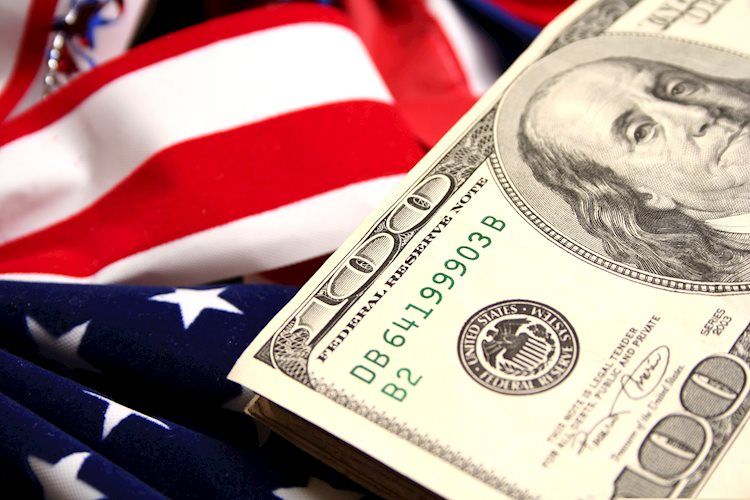The US Dollar (USD) corrected lower on Monday in anticipation of a data-packed week in the US. Despite the correction, hopes of gradual Fed easing and speculation of a Trump win are keeping the USD’s downside limited. The Dollar is on course for its best monthly performance in the past two years. The USD index DXY opened the week weaker, influenced by lower US Treasury yields as investors prepare for crucial economic reports such as the US GDP, PCE Price Index, and NFP report coming out in the next few days. The underlying positive trend of the Dollar remains intact as investors scale back expectations of aggressive interest rate cuts by the Fed.
The Greenback is currently trading within the range from the previous week, near three-month highs, and is on track for a 4% rally in October, marking its strongest monthly performance in two years. Strong labor figures have solidified the belief that the US economy is surpassing other major economies, prompting the Fed to slow down its easing cycle. Market sentiment is leaning towards a 25 basis point cut next week, compared to earlier expectations of a 50 bps cut. The US economy is expected to show steady 3% yearly growth in the third quarter, bolstered by a tight labor market and stable inflation.
From a technical perspective, the DXY index is showing bearish momentum, with price action nearing 104.95 where the 4-hour 50 SMA converges with last Friday’s low. The 4-hour RSI indicator is signaling a bearish divergence, and US yields are retreating, suggesting a possible further correction. Confirmation below 103.95 could push the Dollar lower towards 103.45 and potentially 102.85. Resistance levels are seen at 104.55-104.80 and 105.20. Despite the correction, the overall outlook for the USD remains positive, supported by strong economic data and hopes for a Trump win in the upcoming election.
The US Dollar is the official currency of the United States and is widely used in other countries alongside local currencies. It is the most traded currency globally, accounting for over 88% of foreign exchange turnover. The USD replaced the British Pound as the world’s reserve currency after World War II. The value of the USD is largely influenced by the Federal Reserve’s monetary policies, aimed at achieving price stability and full employment. The Fed adjusts interest rates to control inflation or stimulate economic growth, which in turn impacts the value of the USD.
Monetary policy decisions by the Federal Reserve, such as raising or lowering interest rates, directly affect the value of the US Dollar. Inflation levels and unemployment rates also play a significant role in determining the Fed’s policy actions. In extreme circumstances, the Fed may resort to unconventional measures like quantitative easing (QE) to inject liquidity into the financial system. QE involves buying government bonds to lower interest rates and stimulate economic activity, which typically leads to a weaker USD. Conversely, quantitative tightening (QT) involves reducing the Fed’s bond purchases and is usually positive for the US Dollar.
In conclusion, the US Dollar may have corrected lower recently, but its overall outlook appears positive driven by strong economic data and expectations of a Trump victory in the upcoming election. The Federal Reserve’s monetary policies and market sentiment will continue to influence the value of the USD in the coming days. Investors are closely monitoring key economic reports and geopolitical developments that could impact the Dollar’s performance. Despite short-term fluctuations, the USD remains a dominant force in the global financial markets, attracting significant trading volumes and playing a crucial role in international trade.











